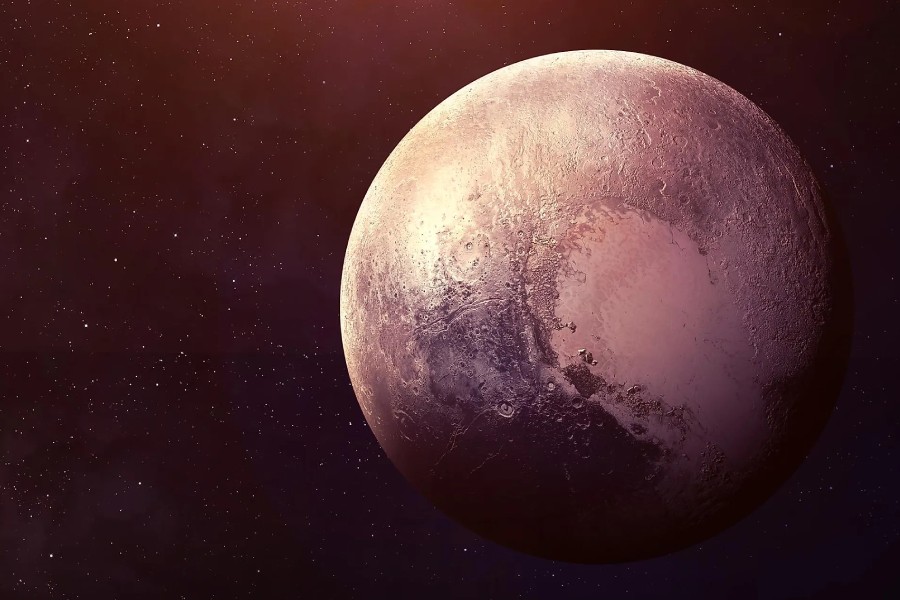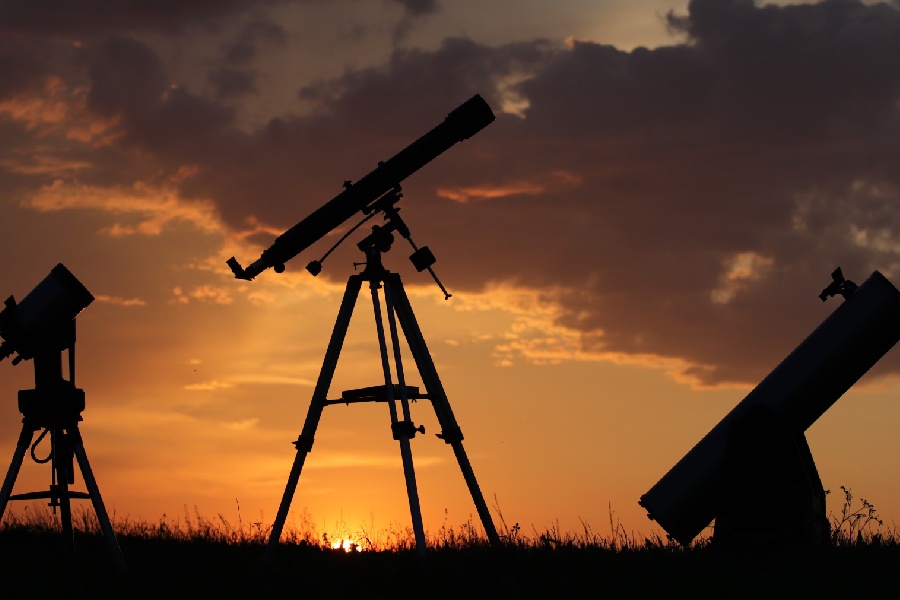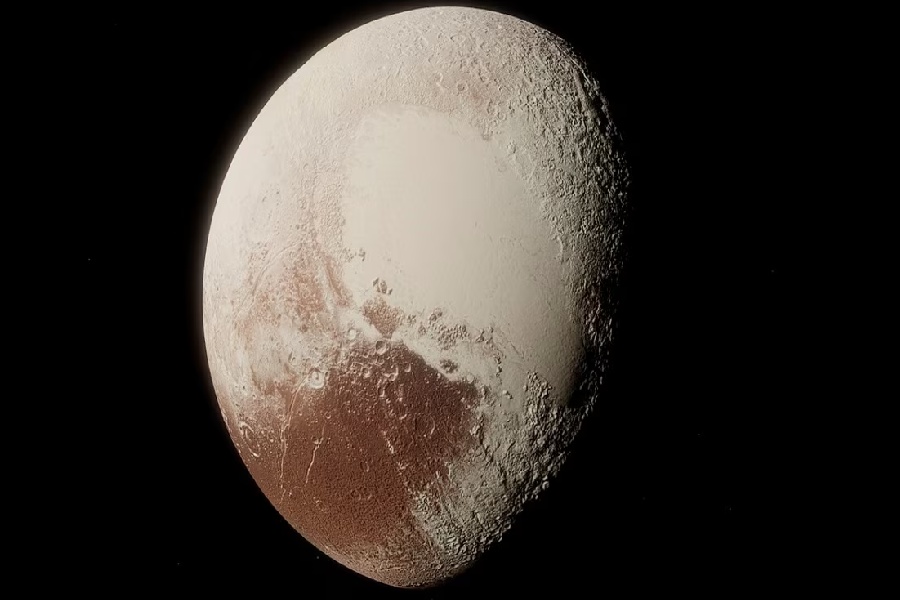Mysterious Pluto hovers amid the dimly lit outer reaches of our solar system. This remote ice dwarf planet, orbited by its captivating heart-shaped moon Charon, intrigues astronomy enthusiasts and experts alike. While Pluto is not visible to the naked eye, can you see Pluto with a telescope?
Can backyard telescopes really discern a dark, tiny world over four billion miles away? After all, Pluto is just a faint speck in our solar system’s outer limits. Even mammoth observatories struggle to resolve much detail on its surface. Does this distant ice dwarf lie hopelessly beyond amateur equipment’s reach on Earth?
This article explores the factors surrounding an amateur astronomer’s prospects of discerning dim distant Pluto using today’s telescopic technologies.
We’ll break down what kind of aperture performance is required, where to hunt amid the starry sky for Pluto’s subtle presence, and what conditions are ideal to even attempt such a lofty feat of direct visualization across the far solar system.
Let’s explore if it’s possible for your backyard telescope to visually bridge over three billion miles of frigid outer space separating us from distant ice dwarf Pluto. Join us as we uncover whether your optics can overcome these challenges and reveal the dim Pluto.

Can You See Pluto With a Telescope?
Can you see Pluto with a telescope? Yes, Pluto can be seen with a telescope, but it is challenging due to its small size, distance from Earth, and relatively faint appearance.
Pluto is considered a dwarf planet and is located in the outer regions of the Solar System, making it much fainter than planets and many other celestial objects. To observe Pluto, a telescope with moderate to high magnification and a dark, clear sky away from light pollution is necessary.
Additionally, star charts or astronomy apps can assist in pinpointing Pluto’s location in the night sky. While it may not be visible to the naked eye, amateur astronomers equipped with suitable telescopes can catch a glimpse of Pluto.
Background on Pluto’s characteristics
Firstly, Pluto’s small physical size, only about 70% as wide as Earth’s Moon, makes resolving its minuscule disk difficult. Additionally, its average distance of over 4.4 billion kilometers from Earth means only traces of sunlight reach us from Pluto.
This is sunlight reflected from Pluto’s frozen surface that reaches our eyes or instruments. These factors force observers to utilize high-powered telescopes with large light-gathering mirrors working near the limits of visible light imaging.
Factors Affecting Visibility
Distance and size
Pluto orbits the Sun at roughly 30 times greater than the distance between Earth and the Sun. Due to this vast distance, only a tiny amount of sunlight reflected from its surface reaches our planet.
Moreover, Pluto’s small, icy spherical surface, measuring only 1,400 miles in diameter, provides a limited area for light reflection. The combination of its significant distance from Earth and its diminutive size contributes to the considerable challenge of observing Pluto.
Pluto’s exceedingly thin atmosphere minimizes the amount of light refracted or reflected from its surface. This compounds the challenge by reducing the already faint glow from its icy surface that reaches Earth.
Brightness under different conditions
Under perfect dark sky conditions while at the closest orbital approach to Earth, Pluto might reach brightness levels equivalent to the dimmest stars visible to the naked eye. But haze and light pollution significantly drop its visibility. Greater orbital separation also reduces how bright Pluto appears.
This requires dark rural settings to stand a chance of sighting tiny cold Pluto. Additionally, bigger mirrors aid in gathering more light to see this faint world. The amount of ambient light from the Moon and planets can also impact attempts to spot faint Pluto. So, timing observations when they are absent adds to the challenge.
Orbital characteristics
Pluto’s orbital period of 248 years means sometimes faster lateral movement against a starry backdrop. Additionally, its elliptical orbit, ranging from 2.7 to 4.6 billion miles from the Sun, poses a challenge for amateur astronomers who must constantly calculate its ever-changing celestial coordinates.
The tilt and orientation of its orbital plane relative to Earth’s also influence its visibility throughout its long solar circuit. Careful modeling of these complex orbital dynamics helps predict the most favorable viewing opportunities.

Advantages of Using a Telescope
Enhanced view of detailed features
While Pluto never affords more than a faint point of recognition to the largest backyard telescopes, intricate planetary details still emerge through advanced professional observatories.
Adaptive optics and long exposure images reveal brighter and darker regions hinting at surface features obscured on visible wavelengths. Infrared and spectroscopic analysis also uncovers clues of Pluto’s composition and atmosphere only detectable via sophisticated telescopic equipment and techniques.
Aiding in celestial navigation
Navigating past foreground stars to precisely target tiny distant Pluto proves enormously easier with telescopic assistance. Manual star hopping and computerized GoTo tracking both utilize optical aids to pinpoint exact coordinates. This precision enables astronomers to aim high magnifications accurately toward Pluto’s subtle position, nestled amidst the fixed constellations.
Digital setting circles and precision motor drives on mounts further help amateur astronomers effortlessly find faint Pluto. Star charts and planetary databases aid in marking Pluto’s identified spot amid labeled bright landmark stars surrounding its location.
Inputting accurate timestamps allows celestial tracking to keep optics precisely locked despite Earth’s rotation. Dual-axis movements smoothly follow along if using equatorially mounted telescope systems. Interfacing with computers enables automatic guiding to hold the desired coordinates centered within the eyepiece view.
Challenges and Tips for Observing Pluto
Challenges spotting the mysterious frozen world
When compared to brighter planets and Messier objects, identifying the faint and tiny Pluto presents several obstacles. These include its low brightness, minuscule angular size, and the potential for confusion with similarly dim background stars. Furthermore, Pluto lacks distinctive features that could aid in its confirmation, and its high magnitude obscures any surface details.
Strategies to enhance Pluto viewing prospects
Ambitious astronomers must utilize top-end telescopes exceeding eight inches in aperture in extreme dark zone skies. Even then, adapting to anticipate Pluto’s nightly lateral motion using fine tracking adjustability greatly assists in obtaining momentary rewarding glimpses after hours of studying blinking star fields seeking subtle interlopers.
Glimpsing Pluto with a binocular
Can you see Pluto with binoculars? Some enthusiasts even try to glimpse Pluto with their binoculars. Although powerful enough to sight faint, deep sky objects, typical binoculars lack sufficient magnification to resolve tiny distant Pluto.
Even large 80-millimeter or 100-millimeter models, while gathering more light, still do not provide enough resolution. Only during very rare close passes to Earth does Pluto appear as anything more than a dot.
While understanding the orbital paths and timing of Pluto’s appearances can optimize viewing conditions, significant amounts of patience and a stroke of luck are still necessary to catch a glimpse of this perpetually distant icy sentinel of the solar system. Nonetheless, a telescope is an absolute necessity for spotting Pluto.
Resources and Tools for Amateur Astronomers
Online resources assisting Pluto observation
Accurately determining Pluto’s barely perceptible location against the stellar backdrop challenges even advanced amateurs armed with fine precision gear.
Thankfully, internet star charts, apps like SkySafari, and databases estimating positions relative to named stars in known constellations all ease frustration in locating this distant wandering ice dwarf.
Joining forces in the cosmic quest
Seeking a faint celestial quarry like Pluto near backyard telescopic limits benefits enormously from communities sharing hard-won knowledge.
Online forums, local astronomy clubs offering peer guidance about best practices, and even remotely operated networks of telescopes for hire provide belonging while mutually expanding the modern citizen scientist’s impact.
Determined observers can pool resources and expertise to reveal breathtaking frozen vistas from billions of miles without leaving home.

Conclusion
As we have explored, seeing tiny frigid Pluto across the vast emptiness of space is an extreme observation challenge. However, under the conditions of dark rural skies and optimal orbital alignment, observers have the opportunity to discern Pluto’s subtle presence. This is facilitated by the utilization of large aperture optics that gather ample light, coupled with reliable celestial tracking systems.
So, can you see Pluto with a telescope? We hope this read has helped underscore the upsides and downsides of pursuing this remote icy world. Remember, what’s observable depends greatly on dedication in overcoming equipment and earthbound seeing obstacles.
As configuration variations change the equation, keep attempting sightings whenever next favorably aligned for your gear. This article aimed to provide knowledge empowering your Pluto spotting efforts.
